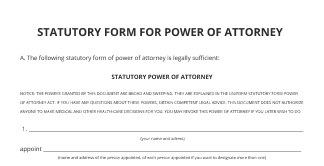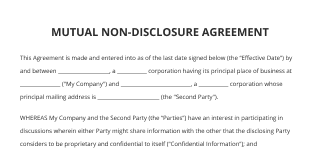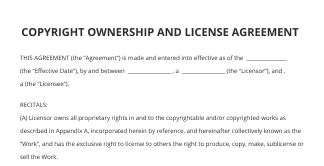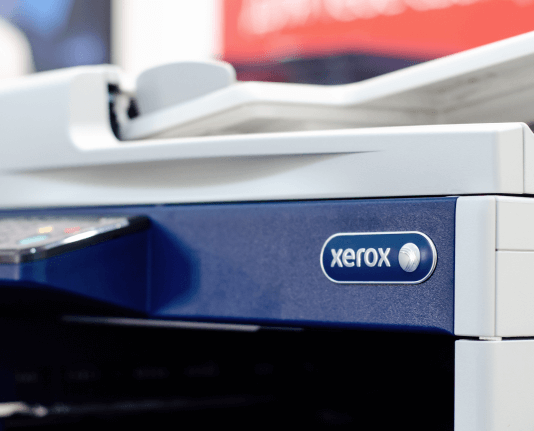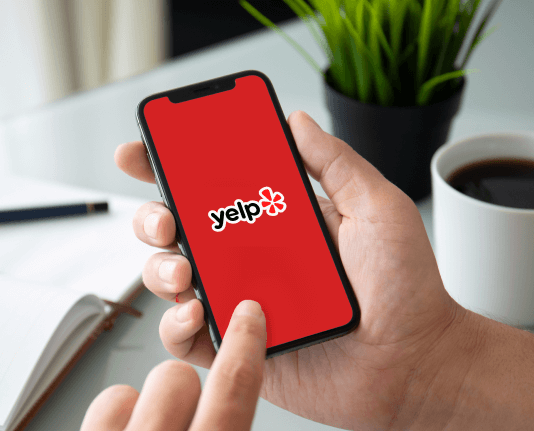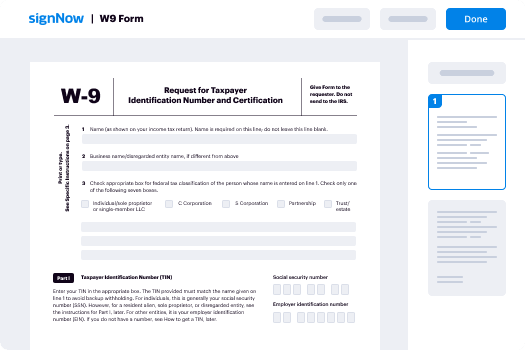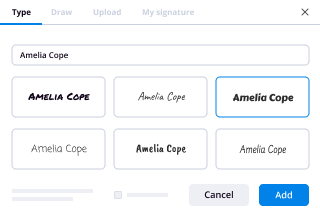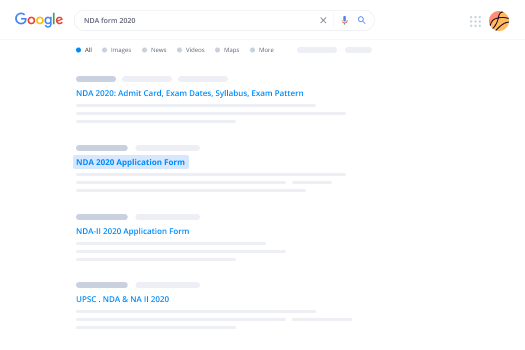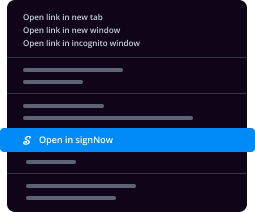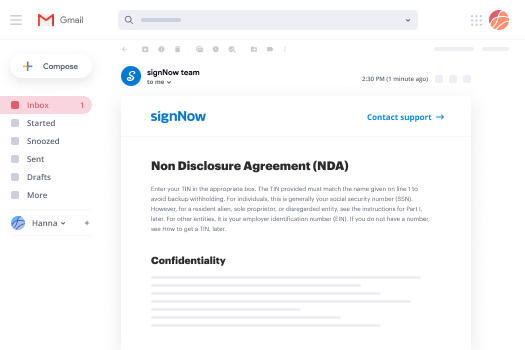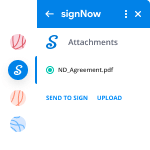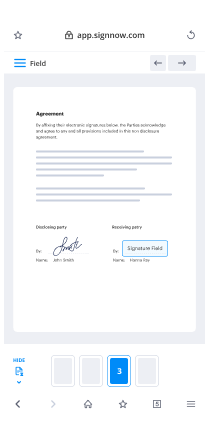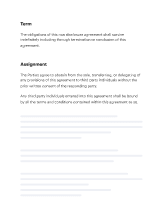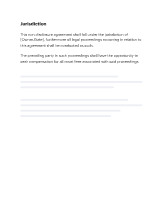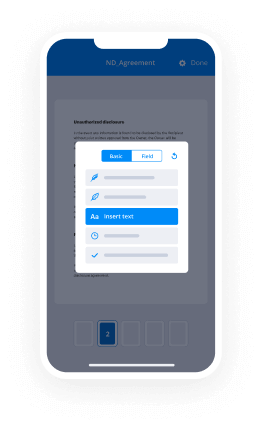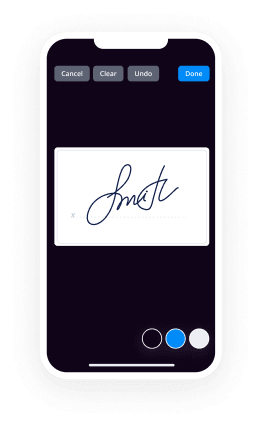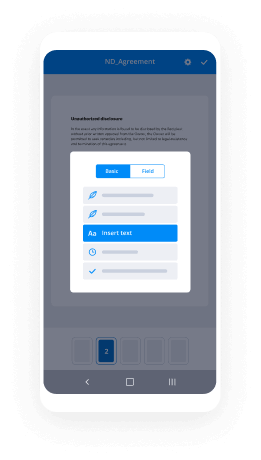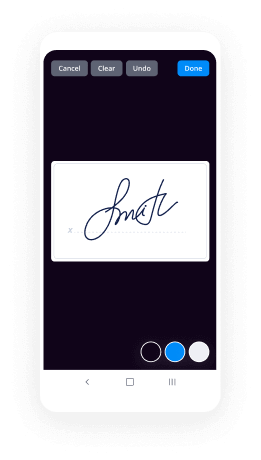Signataire Avec airSlate SignNow
Obtenez les fonctionnalités eSignature puissantes dont vous avez besoin de la solution en laquelle vous avez confiance
Choisissez le service professionnel conçu pour les professionnels
Configurez l'API eSignature facilement
Collaborez mieux ensemble
Signataire, en quelques minutes
Réduisez votre temps de clôture
Gardez les données importantes en sécurité
Découvrez les signatures électroniques airSlate SignNow en action
Solutions airSlate SignNow pour une meilleure efficacité
Les avis de nos utilisateurs parlent d'eux-mêmes






Pourquoi choisir airSlate SignNow
-
Essai gratuit de 7 jours. Choisissez le forfait dont vous avez besoin et essayez-le sans risque.
-
Tarification honnête pour des forfaits complets. airSlate SignNow propose des abonnements sans frais supplémentaires ni frais cachés lors du renouvellement.
-
Sécurité de niveau entreprise. airSlate SignNow vous aide à respecter les normes de sécurité mondiales.

Votre guide étape par étape — signatore
Adopter la signature électronique d'airSlate SignNow permet à toute organisation d'accélérer les flux de signature et de signer électroniquement en temps réel, offrant une expérience améliorée aux clients et aux employés. signataire en quelques étapes simples. Nos applications mobiles-first rendent le travail en déplacement possible, même hors ligne ! Signez des documents de n'importe où dans le monde et terminez plus rapidement vos tâches.
Comment remplir et signer un signatore definition
- Connectez-vous à votre compte airSlate SignNow.
- Trouvez votre document dans vos dossiers ou importez-en un nouveau.
- Le document et apportez des modifications en utilisant la liste Outils.
- Placez des cases à remplir, ajoutez du texte et signez-le.
- Ajoutez plusieurs signataires en utilisant leurs e-mails et configurez l'ordre de signature.
- Spécifiez quels utilisateurs recevront une copie complétée.
- Utilisez Options Avancées pour réduire l'accès au document et définir une date d'expiration.
- Appuyez sur Enregistrer et Fermer lorsque vous avez terminé.
De plus, il existe des fonctionnalités plus avancées disponibles pour signer en tant que signataire. Ajoutez des utilisateurs à votre espace de travail numérique commun, parcourez les équipes et suivez la collaboration. De nombreux utilisateurs à travers les États-Unis et l'Europe reconnaissent qu'un système qui rassemble les gens dans un espace de travail cohésif est ce dont les entreprises ont besoin pour faire fonctionner efficacement les flux de travail. L'API REST d'airSlate SignNow vous permet d'intégrer les signatures électroniques dans votre application, site web, CRM ou cloud. Découvrez airSlate SignNow et profitez de flux de travail eSignature plus rapides, plus faciles et globalement plus efficaces !
Comment ça marche
Fonctionnalités airSlate SignNow appréciées par les utilisateurs
Découvrez des résultats exceptionnels signatore definition
Obtenez des signatures juridiquement contraignantes dès maintenant !
FAQ signatore
-
Qui est une personne signataire ?
signataire. Un signataire est quelqu'un qui signe un document et y est soumis. ... Un signataire est quelqu'un qui signe un contrat, créant ainsi une obligation légale. Il peut y avoir plusieurs signataires pour un contrat spécifique. Avec le temps, ce mot a souvent été utilisé pour une personne ou un pays qui signe un traité de paix. -
Que signifie le titre de signataire ?
1 une personne qui a signé un document tel qu'un traité ou un contrat ou une organisation, un État, etc., au nom duquel un tel document a été signé. -
Comment appelle-t-on une personne qui signe un document ?
nom. une personne qui signe un document, un registre, etc. ; signataire : un signataire de la Déclaration d'Indépendance. -
Qu'est-ce qu'une liste de signataires autorisés ?
Un signataire autorisé est défini comme un directeur de l'émetteur ou une autre personne qui a été autorisée à signer des documents et a notifié au fiduciaire qu'elle a reçu le pouvoir de le faire. Un représentant ou un officier se voit normalement confier le pouvoir de signer l'organisation pour un accord contraignant. -
Qu'est-ce qu'une société signataire ?
Une société signataire est un employeur qui a signé une convention collective avec la WGA. Toute société souhaitant employer un membre du Guild, ou optionner ou acheter du matériel littéraire auprès d'un membre du Guild, doit devenir signataire de l'Accord Minimum de Base du Guild. -
Les administrateurs sont-ils des signataires autorisés ?
Exécuter des actes En regardant d'abord la branche (a) ci-dessus, les moyens les plus courants par lesquels un document sera exécuté par une société sont par la signature de deux signataires autorisés (étant les administrateurs ou le secrétaire) ou par la signature d'un administrateur en présence d'un témoin.
Ce que disent les utilisateurs actifs — signatore
Recherches associées à signatore
Call signatory
my name is saya vinicky I am senior manager for data in the reporting and assessment team I oversee also part of the data portal in particular the usage of it and the raising awareness around the the tool along with myself we've got Catherine Chen who is senior manager for asset owners as part of the investment practices team and Catherine will be providing some more specific examples of of manager selection and manager benchmarking my name is saya vinicky I'm senior manager for data in the reporting and assessment team and along with me we've got Catherine Chen who is senior manager for asset owners as part of the investment practices Catherine Chen will be sharing some more specific insight on manager monitoring following our input the stories we'll hear from our contributors we've got four contributors representing 3s owners and investment please include satin or bug Martin Parsons flora Gaber and Yelena Samantha fun roamed and welcomed them all to this webinar and they'll be sharing more on how they've used data portal to either select managers or compare managers and improve their benchmarking practices today well first go through the data portal uptake among cemeteries this will be followed by our contributors who will give us more detail on how they've used data portal well then get some feedback from Catherine Chen and behalf of investment practice team I will cover some of the new functionalities that was introduced in the data portal and we'll finish with some very short tutorials on how to use data portal specifically how to analyze data how to search for signatories based on specific practice they may be doing etc so very briefly the data portal is a web-based platform that allows signatories to search view and collate transparent reports the portal enable users to request access to private reports such as the private transparent report and the assessment report from other signatories of course the signatories must approve such requests for the private reports to become available it also allow users to export responses and therefore conduct and is not analysis you can find the data portal very easily through our website so on the landing page of our website you'll see on the top right hand corner all our web-based platforms are clearly signposted so next we collaboration platform you can find a link to the data portal so who can again it's quite important this is only available to sing juries it's not available to the public at all and and it specifically is only for the direct staff of theorizing Therese in order to look in one user must user credentials as per the PRI website or they can reset the password via the the reporting tool actually there is one account per person so for example if a user typically for example has done the reporting on behalf of their organization but also potentially on behalf of some of the clients while this is allowed on the reporting tool to say this there are additional restrictions on the data portal and you will be able to log in only on behalf of the organization you directly employed for there are a couple of rare exceptions for example if you've got an outsourced CEO model and you go finish your manager therefore that physician manager will be able to log in on your behalf and certain situations were recorded parent-subsidiary a situation a parent might be able to log in on behalf of their subsidiary organization your users um if you haven't registered to the Torah website then please do so you will be given a password via email and that should allow you to access the data portal it's use encountering any difficulties with this please email us at reporting at you NPR idol org there are mainly two levels the first level is as a standard user so a standard user has all over functions that other users can have except that they cannot approve requests they can deny request they can however do not request the second type of user that every organization should have is what we call a data portal contact this contact is agreed at organization level to hold such authority and the details of that contact is provided by you during through the reporting framework the this particular user time is the only type of user who can approve requests that have been sent by other organization towards your organization finally as a sign note service providers have similar access to similar similar functionalities as a spinners and in and this managers have except for the moment they cannot request access to private report from other signatories this will be reviewed in October 2018 so far there are nearly thousand three hundred signatories who've used data portal since the official launch in July 2017 out of which nearly 250 our asset owners this and starts are based on users as of the end of July 2018 and the main areas where we see of course the highest number of investors using the data portal as in the US and the UK which reflect of course the the PRI signatory base in this particular market as of the 27th of July 2018 there have been over a thousand requests sent by 147 signatories to other signatories asking to access either their assessment report or the full transparency report out of this 52 percent have been approved specifically when we're looking at the status of the requests made from after their listing best managers the percentage of approval is higher at 61 percent and actually only 1% is declined but we will be wondering what what's happening with the rest well there's a 38% remaining that has not been there have not been action so their request that either I have haven't reached the right person via email or the the receiver did not recognize that email in terms of the association with the data portal so or signatories are still unsure about implications and what it means to approve such a request so we expect those pending requests the non-action request to come down gradually and steadily as we raise awareness about the data portal and as we clarify any questions things you may have such as yes when you approve a request this this our request means that only the center who requested is being given access to your private report it is not giving access to every other's injury on the platform so requests are made on a one-to-one basis also you are entitled to decline the request generally we advise - we suggest it's best to - to give access to your report especially if your manager and it's this request is coming from a asset owner who is either your drawing client or could be potentially client because this is information that they use on - to be able to engage with you and to benchmark you and potentially to select you so not providing the information virtue in in a less favorable position it's quite important as we're talking about this pending request I encourage everyone following this webinar to go to the TV data portal login and set your permissions and make sure you receive email notifications the relevant tab to do so is called settings and requests you'll see at the bottom part of this slide there are two tick boxes for email notifications if you want to make sure that you receive promptly such requests and that you can act upon those requests so you don't miss out then take those boxes also through this this page you can specify whether you want to automatically accept requests by different types of injuries or whether you want to automatically accept requests coming from an asset owner or investor manager or a service provider although other staged service advisors cannot request access to your reports and so this is this is this does not reapplying to them right now well hearing next from some of our signatures who have used the data portal for the purpose of improving how they conduct due diligence and how they engage with their managers our first contributor is that Nordberg investment analyst for droidekas cha deca is a small asset owner based in finland and managing just under 550 million u.s. dollars and managing listed and enlisted assets welcome back to on webinar thank you very much and thanks for having me thank you so without any more delay sir let's jump in straight into the questions and for what purpose did you choose to use the data portal well I was tasked by the senior management to evaluate our asset managers under ESG performance and but this was the first time we did we did such an evaluation and I reached out to the to the PRI if they if they had a service or a tool that could be helpful in facilitating this and that's that's how I found about the PRI data portal great and for which assets in particular DG is the data portal this assessment was done specifically for asset managers that manage liquid assets so primarily equity and fixed income fund investments okay that makes sense I guess and being some of the major assets and where there's a lot more information general so this is your starting point in terms of in terms how did the access the data portal changed the the way you engage with your managers could you expand it even more on that yeah well it allowed us for the first time to really do a a good comparison between the between the asset managers so far we analyzed the asset manager performance on a case-by-case basis usually a more thorough analysis at the time of doing the investment decision and then follow-on analysis just to see how things are working out but the PRI data portal allowed us to really assess the AF asset managers in a standardized way since they've answered the same questions and in the in different categories and so forth so it really gave us a good holistic view on on the differences between the asset managers that we used right that's true because effectively by requesting the this information through the data portal the the managers number you have a choice to select or pick information they they would like to share it actually whatever is created through the bureau in terms of the assessment report for example if their choice the toys are forcing Taurus to approve the request or deny it so therefore that information want to share it it's very much standardized as you said so that's really good to hear that this gives a bit more potentially standardized format to compare information among managers yeah exactly as you mentioned that the assessment reports here world where of course the key key sources of information and the data portal allows nicely to put in the request to see this to see this report and and to gather it so yes very good um and in terms of challenges do you have any challenges when requesting access for managers to view their private reports mainly it worked very well there there were a couple of cases where the request went to to another person different of that that we normally engage with in that particular firm so that was pretty much the only only issue is you can even say that it's an issue but that's that was the only one only only thing that comes to my mind great so that's of course to do ways like that data portal is is relatively new tool for signatories when you're old so it's a bit of a learning curve for all our signatories to get familiar with the portal and of course providers with the right information in terms of who are the the people who should be receiving those notifications and next question so what improvements you hope to see in the future and I would help you further with evaluating managers I just the most helpful feature would be to being able to download the assessment report data into Excel format that would allow to combine let's say if we do a request for 20 reports I'd like to make a comparison of those those reports with within the different asset managers being able to download it to excel would allow allow formatting the data in a way to make it quickly comparable now I punched in manually the different scores and and other information from from the individual assessment reports as that stated the Third Point at the moment the the data that syngress can download the excel includes the the public responses in the transparency report so that is possible using my lists in Explorer data and in fingers can download effect you all their public responses for any given module so we don't have your the functionality unfortunately not yet to download in Excel the assessment scores for the centuries for whom you do have permission to see the report so and we'll be looking into this I'm sure in the near future thank you very much tattoo I think we'll be moving on to our next contributor our next contributor is Martin Parsons Project and risk officer from the Environment Agency pension fund welcome Martin to this webinar thank you it's a pleasure to have you on this webinar and you as I said you represent the Environment Agency pension fund a prior to pulling was managing over four billion u.s. dollars and made us a small team so it'd be really interesting to hear from you how how have you used the data portal and maybe you can expand a little more about what we meant by prior to pulling because I understand it your organization has is going through certain changes yes so just to say it's very happy to be on this call because we've found the data portal very useful we use external asset managers and in 2017 we sent 14 requests to signatories for to see their asset assessment reports and we use the scores from the reports of two reasons really one is that we like to report to our pensions committee on how our managers are progressing in RI and also just really have a conversation with the managers whose scores have changed not just solely not necessarily those that have gone down but also recognizing progress and passed on our appreciation to managers who who have progressed when where there are cases where scores have fallen often the manager does have an explanation as to why this is which on C we're glad to receive and pass on to a committee and they will often reporters of steps they've underway already to be able to improve the score for next time and just to explain that we were obviously before the data support we were asking for the reports manually and have used them in previous manager selection from a very useful part of our tendering process and the UK local government pension funds have been grouped together in pools and the Environment Agency pension fund they're going to be in a pool which is called Brunel I know from speaking to Brunel that they will make good use of the kirai reporting as part of their manager selection appointment in monarch monitoring going forwards great thanks Martin and thanks for clarifying also the changes going through the organization any will be interesting to hear then in the future from vanilla and how they will use this you to the data portal for a manager selection so probably another key study to look forward to in the future next year moving on to a second question how do you believe or change your ability to engage or evaluate managers so the said earlier we were originally requesting the reports in a sort of manual sense having to Salim LM thrown out to different managers and the day support will make the process so much easier so I think from our pointedly be that the time that we would have spent trying to get the report sent through is now no longer needed and we can then use that time to do some more analysis and another work around the report so that's the benefit to us that's really useful to hear especially among other participants on this call who represent small organizations with limited resources this is exactly one of the things we we want to the data portal to do is to reduce the time it takes to sort of things so they've got more time to actually look into the est information off the managers so I'm glad we we're meeting of that particular objective already next question did you face any challenges when requesting access to an assessment reports from your managers so yeah we did and I think it was because perhaps the system was new and either the notifications weren't going to the person from the manager site that we would normally deal with to the PRI and contact for the assessment reports was different or maybe just in general the risk request hadn't really been understood on the manager side obviously we just we just cleared those up with with a quick call in a few cases we did get pushback so we engaged in conversation with the manager to clarify that this was a requirement of all our managers and to give them reassurance that the information was for our internal use only and just explaining that it would go to our committee for example the signatures where we did get some pushback tended to be our newer managers who perhaps would not have this type of request from their previous clients and then also manager in the private market who may be less used to divulging their ESG information great very very useful information their margin in two perspectives one as I said yes we are aware that a data portal being new launched just one year ago not every singer is familiar with it and so there have been this situation where some of our requesters and requesting send by signatures through the portal don't necessarily learn to the right person even though we we try to capture the right person who has that authority to approve that request through the reporting framework in the closing module of course that might not reflect the right person over the course of a year before the reporting cycle opens up again so it's really important for yes signatories to let us know who that person is especially that person who has that authority has changed or has left the organization and again it's great to hear that you as a thinker who is following up on those requests that you actually are facilitating our tasks in a way because you are effectively reaching with the right person and then hopefully this process will help to get more and more of the center is to use a data portal and provide the accurate information for the data portal contact and the second thing I wanted to come at a little bit is we mentioned also about asking the reports from managers in the private markets which yes it traditionally is information we don't it's not ready available in terms of ESG performance out there so it's great to hear that the data portal can facilitate in that evaluation which traditionally was not necessarily possible so it's really really good to hear right final question as we are running out of time what what additional functionality would help you in engaging evaluating and selecting managers obviously you're saying that the selection will be more part of Brunelle in the future so maybe you can further your their hat on the brunette hat on well answering this question yes what would be your your top functionalities you would like to see sure well is only a simple one but um I found and I guess they would possibly fight missed it I would like to been able to pick the managers that I've chosen last year and then drop them into a new list for this year rather than having to go through sort of manually pick out the managers that I needed so I don't know whether that something is possible to do right yes it's a good functionality to to actually have at the moment it's not quite a straightforward so however if you've got a list of managers from a previous year the next year as long as your list hasn't changed your managers hasn't changed then you can fi could use a list and you access is that a particular report even though it's a previous year for signatory and then once you go to that page while it will land on the historic report you can change the year to see their latest report because once you've been given access to a private report then this permission gets rolled automatically Road and out for the next year again I can see how that's a little bit you know more clicks than you might want because you'd have to do that for every report or just a year but at least you don't have to request again permission to the reports so I'll take your recommendation on board and maybe something we can look for for 2019 as an improvement okay sounds great thank you all right great thanks a lot Martin for joining us on this webinar and for sharing how you use the data portal that's been really insightful we'll now move on to our next speaker flora gaber who's an analyst for responsible investment for land force and gregor one of the largest insurance companies in sweden managing approximately 30 billion u.s. dollars in this webinar flora will be sharing how the organization use the portal for monitoring managers welcome florrum thank you so without further ado we'll jump into our first question for you for what purpose have you asked to access transparency reports and assessment ports of managers well last rattling out employees a large number of external managers both enjoyed enough and abroad which we assess from an ESG perspective during the selection process and we also do an annual monitoring of our existing modules we use the transparency report and assessment report as a source of information for our own ASD assessments the has much boat provides us with a quick overview of how external managers are benchmarks against the peers and the transparent report provides details which we use in our own equipment thanks Laura and a can I confirm is the benchmarking that you're talking about is that against the rest of the PRI managers as shown in the module scores distribution charts in their assessment reports or is it against the scores of your other asset managers both actually we compare manager scores to the discretion truck and we also compare my your scores with each other great thank you and how how did the data portal change the reviewing process for your organization well the data porter has made the process more efficient and for requests and reports or shared to one platform and the whole process becomes more streamlined and we can more quickly identify possible gaps and that skalamander just explained them that's really useful so by by having access to those reports quickly you can actually use it as a way to engage and have a conversation with your managers because you can see where there's some areas possibly of responsible investment where they may be potentially lagging or not doing exactly what you would hope so you can then have this conversation identify some of the some of the gaps as you said that's correct great I'll move on to our next question my understanding is that there for you you create your own proprietary score for your managers using a combination of the of the data that you access through the data portal can you give us a bit more detail on how do you come up to that final score right so our external managers approach and capabilities whether got to respond to investments are assessed from three perspectives both in the selection and in Turin processes and the first effective is organizational approach this includes for instance policy objectives resources skills participation in initiatives and as well as the public reporting at this stage we use the transparency report as a resource as very useful the second perspective is active ownership which includes dialogue with portfolio companies and voting and the third perspective is integration which is how the manager considers each ESG issues in investment analysis and decision both the active engagements and integration and perspectives are from specific so we can get only limited information from the PRI reports here and since the PRI reports themselves are not one specific right that's quite important to hear that you're using both type of information organizational level data that you can capture through the PRI reports as well as a fund level data that yes that's true the reporting framework at the moment is not does not ask such questions it was designed for process and I think we'll be hearing a bit more about that approach from Catherine Chen later on I think that's that's really valuable for other fingers to hear that it's important to use a combination of information okay and in terms of of requests that you sent out did you did you get some challenges with some of your managers to get access to their reports right so most managers they granted us access to their reports and in several cases we had to follow up and in just two or three cases they initially declined to share their assessment report as their internal management opposed to share the full report with a client we found out that this correlated with majority of three implementation and after conversation with the managers one of them released their assessment reports while two provided us with the summer of their score for the strategy and governance and specific model reflecting the assets they were managing for us great and that could be I guess a first step before especially new managers who might not be quite comfortable yet to share their reports they can still share I guess the the relevant information for a particular module but hopefully if you ask them next year there will be a they'll be sharing the whole report once they're more comfortable yes we're hopeful final question for you flora what would you say to potential managers who might be reluctant to share their reports that's of course from a point of view of manager selection which we have not gone into details from from your sign but I know you do a little bit of that as well what would you say to those potential managers well when we request reports or really need those reports within one or two months as they ascend into a selection process as dementia and generally speaking we request information to be able to create them ESG score if we if they do not provide us with full requested information we are not able to give them a full ESP score great thank you so much Laura that was a really insightful so thanks for sharing with the rest of the signatories thank you our next contributor is Yelena stemming Cova van roomed senior advisor for responsible investment at PG GM a large international investment manager based in the Netherlands welcome Yelena thank you so much for joining us today for this webinar hi thanks great to be here great so well we'll jump straight into our questions since we're short on time so again Anna you've requested the assessment reports via the data portal as part of your manager due diligence process could you give us a bit more details of how you use the portal to facilitate this process yes sure so I think if I look at the processor the floor I also was talking earlier we have a bit of a similar process we created as well our own questionnaire that we have this is basically coming inspired by the PRI GDQ it has seven main questions and we are basically continuously analyzing and updating the external managers that we work with already but for the due diligence part we also use it to see managers that we are not working with at the moment and to basically analyze what how they would score potentially by using our own questionnaire and the data that we can find from the data portal is basically facilitating this great and my understanding is once you've captured that information that is most relevant from the transfer entry for example to line with the ddq for example you do you come up with your own ESG score so you don't just rely on assessment scores really is that correct yeah exactly correct so we don't I think this assessment course are useful for us but at the moment we don't have enough access to enough of them so I think going forward we would like to use them also more as a sanity check to our own scoring because our score is basically seven different scores come together in different ways so for example we weigh policy but we wait in substation a little bit more than the policy questions let's say and this is how we come up with the final score and we would like to compare that to the assessment for at some point great that's really interesting to hear and M in terms of once you've got your calculated score what happens if you find some of the the managers are on the lower end of the scoring system compared to the other managers you've got so we basically would take it we have seven different score in our whole monitoring framework and one of this course is the score that how managers : huge integration so with the manager the score legs we will definitely engage more also because our clients expect certain levels that the managers that they have scores so we have to basically have that discussion and so we have more engagement and we have discussion on specific issues like especially a signatory to the PRI or is an important one for some of our clients good integration good reporting etcetera great so that's really interesting to share so you use the the scoring a try then for who you will engage where those particular matters but also you communicate clearly to those managers that there are expectations from your clients and that at some point there is a need to improve otherwise there are some repercussions let's put it like this is that correct can I can I jump to such a conclusion yes yes I that that can be the case especially we do I have to say repercussions is not really something that we want to lead with because actually we very much appreciate an open discussion and we very much encourage that rather than immediately drawing conclusions because there are very different reasons why a manager can have a poor score on a certain questions so we like to understand that better before we yes eventually there are the potential equations great and that's quite nicely to know that there is that the engagement parties at the beginning but then there is the knowledge that there is something that may happen later on and that's where also information from transparency reports which is more qualitative can can be quite useful as well as you said because they may not do certain practice but there may be some good reason for it and I guess I would reiterate for some of the qualitative answers from transparency reports can be quite valuable as well yeah exactly right moving on to our final question for you so how do you feel how did the day support will change the etiquette change the due diligence process for you but I have to say at the moment we are not using the full capacity of the data portal that I feeling at least I think we will definitely work on that more at the moment it's a very good source where everything is so we have everything on one place basically I think going forward we ideally would like to be able to connect for example qualitatively the answers let's say from transparency reports that match our questions in the due diligence questionnaire and then basically we can immediately be able to make the assessment and analysis without going through each and every one separately great I just want to reiterate because you've been just the DBQ not wise we want to confirm abstract is the reality q in practice team have stopped process okay yeah exactly so we started with the private equity and then because I also work with the private equity SSS we basically made that to business well we'll change it a little bit and we adapted it to fit to the external management process great lovely thank you so much Jelena for sharing how you've used the data portal first BGM that's been really useful thank you so much Jelena thank you we are now going to move to catherine chen who's senior manager for asset owners at the PRI as part of the investment practice team and catherine is going to share with us a more detailed example of manager monitoring catherine welcome to this webinar hi thank you thank you so much for many signatories insights online side is f o insight team in PRI from many conversations we had with our signatory s owners are regarding manager selection monitoring process majority of them have set up the ESG manager selection process but not all of them have the monitoring process so many of them especially after overseeing the trees outside of Europe are very keen to establish the manager monitoring process within each integration in corporations some of them have used or started to use data portal as talia mentioned as a cross references not only for the manager selection part but also for the monitoring process on top of the existing evaluation process in order to ensure that their results are not too biased as I understood that some of audience today intend to set up their own monitoring system from here to share one of the asset owner signatories experiences that started from our four years ago so the slide show is actually example on the west path it is a u.s. mid-size of s owners at 21 billion u.s. dollar asset under management it is a pension and health benefit of United Methodist Church so what is interesting about this s owner is actually 95% of its assets is managed by 53 external investment managers which makes that the manager selection and monitoring processes extremely important internally so about four years ago they developed the process to evaluate how external managers were integrating incorporating ESG into the investment is unique to do that they firstly develop ESG integration is reporting questionnaires that require all the managers to complete as part of their annual reporting responsibilities and then the use responses to form the truth files the first one is core performance net shot the second one is individual energy assessment the slide that currently shows is the division manager assessment that is comprised of 25 indicators so what is what it did is based on the event connects the benchmark manager performance across categories policy and resources ESG integration strategy and active ownership it's pretty much a similar like what LS and also TGA mentioned earlier and the weighted each categories to reflect that ESG abuse and relative importance so for example pallets and resources represent 25% years integration rivers and fifty percent and the rest goes for the active ownership and of course within each of the three categories they also include the sub step indicators they also reflect this S owners view of develop importance and I don't else get their parties to detail-oriented so what happen is this F owner webcast or the performance of each managers on a scale from one and zero to a hundred and create a performance snapshot and the group the managers existing managers the prevention a portfolio into the three performance bands they are first one leaders seconds chasing pack and last one starting grid what is interesting is that the during the scoring process they also avoid the parasites bias to ensure that as owner record as the owner recognizes the boutique managers the fact that the heaven they have a few resources can effectively integrate the sgem reissues so this appraisal was essentially used internally externally within the bath owner internally every two years this s owner evaluates external managers regarding manager retention and allocation rebalancing the result of praise though is the key components for the evaluation and externally they also shared results and feedback to managers as part of their of engagement process to letting AF managers understand that what they look like as compared with their peers and also help themselves to send a clear message about the ESG goals so for those who are interested on website has published this es integration inside monitoring and on websites so you're gonna welcome to download their file to limit details of the process I believe that many of our owners have different weighting schemes like they did this is just one of the samples that a PRI as owner team wish to share in order to help especially medium and small F owners to form the monitoring process on our side we have published the guidance on the manager selections then we'll be preparing the guidance of manager monitoring next year in the hope that we can help more eff owners if you have any innovative ways and wish to share with us pris owners team please feel free to contact me and I'm more than happy to discuss and share your practices through our platform to help other s owners thank you Italians can I leave it to you yes absolutely thank you so much Catherine for this very detailed illustration of manager monitoring and we definitely look forward to seeing this and the publication that's going to come out in 2019 and just reiterating the point you make is even in this illicit of example it's a balance of using information is information from an organizational level that sync'd Aries are sinners can get from the transparency report of the managers as well as other type of used informations at at fund level that is not currently captured in the transparency report so it's about reminding us well that transparent reports and assessment boards on their own is not doesn't necessarily offer all the information you need but offers part of the information that can help with manager monitoring we'll move now to the new functionalities that are available in the data portal as of 2018 as you will see your assessment reports this year include the year-on-year graph so therefore giving a bit more insight visually on how your scores have changed over the past couple years full service providers this is where you can find out your report and also for us donors and managers it's an opportunity for you to request reports from service providers finally as you know we launched this year after of the reporting framework the option for signatures to report on climate change and you will find on the data portal those reports can search for specifically for climate reports for signatures who completed who opted in the climate reporting through the finder report tab there we go as I was mentioning before so the way this will display as one's if you found at practical signatory you will see on the left hand side below the public and private versus public view only you also have the tab climate change and if you click on that tab then you will see a smaller version of the report which will contain just the answers and questions related to climate change that the the given signatory has reported on and of course has made public for the moment to access all the for the data set for 2018 you've got the option this year to download the full public data dataset so that is for 12 modules for a thousand 400 all signatories their responses so under extraordin you'll find a list of documents one of them being the public responses to climate change the public responses from for the main reporting frameworks for the one called thousand 18 all public responses investors and similarly all the public responses from service providers you will also find on deck store data snapshot reports this are exactly dynamic charts that portray the practices by asset class region investor type they are based on a selection of indicators for various models that modules that we've chosen to analyze and give you the opportunity to see what are now common practices versus which practice are still considered advanced practices and this is quite useful if you want to see where how you compare on a very specific practice against others on and and also if you're interested in knowing what if you're an asset owner if you want to do request a certain practice from your manager by looking at those reports those charts you can you can see whether what you're asking is actually quite a common thing for managers to be doing or not and therefore whether your request is very much supported by what the industry is already doing so this is how a particular graph may look in the snapshot reports so this is an example for from our fixed income directly manage assets report in this case we were analyzing what's the assets for which investors are engaging on on the fixed income asset and you can see in this particular we have a higher percentage of assets that are engaged on when they are corporate than when they are for example security or bonds or SSA bonds at this stage I'll take a moment to see if I can show you actually how one of those looks like here we go so I've just clicked on the link which brings me to the this particular snapshot report so just to show you how it looks like these got various pages you can scroll the content is very clear in terms of what aid what the particular report covers so there's normally an overview that shows you the distribution of assets there is an a section on that particular asset that's more about some gateway indicators as well as highly assessment scores and the degree to which respond to investment is considered by investors on their fixed income assets the next section is with respect to a selection of indicators in the module that are very much about processes and at the end you'll find supporting information such as methodology in the appendix in this case we will jump straight into what we were talking earlier on so for example engagement coverage and you can see that on this page what I see now is the ability to filter to tailor this particular analysis for a particular region so for example maybe interested purely on what's happening in the US therefore my graph has been adjusted and maybe I want to see what managers are doing specifically and what we see here is that our for corporate bonds that are directly managed the give us about 25 percent so a quarter of the investors do not engage at all on their on their corporate bonds and that I'm really just 20 percent are engaging on more than 50 percent or more of the assets so this is a way of interpreting information you've got normally a box that covers up some key findings and also gives a link to some other other resources that are relevant to this particular process and theme right so that was just an example of of that like coming next um case studies will be published on our website about how investors have been shared using the data portal will be introducing filter optional text or data to actually select specific indicators to export for 2018 data is currently XML there yet and I believe Catherine mentioned early on that there will be guidance on manager appointments and monitoring that will be released in quarter 3 2018 we will also be producing some additional snapshots this year our focus will be on climate change to be released before PRN person a snapshot on practice from the service provider reporting framework with a bit more on acid consultant practices and there will be a snapshot report on our eye practices in the private equity industry right this is now the section where we're going to go through on some short tutorials the first example is is going to be really about how to use a data portal to seek data in order to improve a benchmarking process of managers in a vat will in person with Environment Agency pension fund courtesy of Martinsville I think we do that thank you very much so I will now just move to Internet Explorer right for the sake of this exercise we'll assume that I'm an asset owner in Australia and maybe I'm interested only in the managers in Australia so in my field here on the signatory type I select my best manager in the country I select the country I select the submitted year to narrow down the number of reports that will be displayed similarly I will select transparency reports so I don't see twice the same signatory once for their assessment in once for their transparency report there we go our pairings got 72 managers in Australia so that's reduce further maybe let's put we are interested on anyone who has less than 10 billion all right apparently still quite a lot so I just say I'm just narrowing down very much this okay so I will add all of those reports into a list so I'll create a new list and I'll call it data portal tutorial webinar okay select the list where you want to others now I'm going to - and as you can see now but one location where I can quickly request access to the transparency reports and also the assessment report from all of those manages in this case if you request assessment report the if the request is approved you automatically get also access to the transparency report if therefore you might just want to send a request for the assessment port however if some investor does not want to share the assessment port there might be more keen to just share the transparency report or the full transparency report then it is quite worth it as well to request a access to their private transparency report in the second tutorial we will attempt to search managers based on advanced criteria such as the asset class ma hold or particular ESG practices that we are interested in considering so because these these are advanced search fields they they do not appear in data portal under the main find report tab so the weight to such advanced search is by using the iock store data functionality so I'm going to share you my spreadsheet so as I mentioned earlier first of all you will have gone under explore data but as well show it now this is give me a moment Sherrington new story yes so the idea here is you're going to explore data documents find this and request to download all the public responses so click download eventually you'll save it open it etc you I will now move on to sharing what Wow showing what I'm doing once I'm in the spreadsheet where are we okay or in the Excel so the idea is before we jump to the tutorial what you will see is a very large spreadsheet I've actually for the verbs of this tool made it slightly smaller but effectively you have something like 10,000 columns um the first couple of columns we've got some fixed and useful I would say metadata that allows you to easily potentially use those for filtering some of the information there so let's move on to the second tutorial as I was talking about personal disclaimer the practices that I've chosen below are used for demonstration purpose only this example does not constitute advice on how to select property managers no nor does it reflect theorise view on this subject so we've talked about advanced practice and how to search particular signatory based on a given practice so what I recommend is because we're talking about specifically the PRI data if you're interested in searching for signatories investors that have certain practice inflames the idea is to first look at the offline document once you look at the reporting framework offline documents specifically the one related to property since we're looking at property practice here this first page called that way through the module is very useful to indicate what practice you might be able to find search for so in this case I will select something on having a responsible property investment as well of investors who are incorporating use two issues when selecting when selecting the property investments and I've got maybe a practical preference for when interest in and knowing that property managers or the investors are engaging on majority of their properties so they engage with the community on ESG issues for the majority of their properties so this will be PR 14 so now they've identified so I had a couple minutes to look through this oh these are the some of the shelter's practices I'm interested in narrowing down some of the investors because I want to find out more about them I can go back to the spreadsheet and give me a moment cuz I again I need to we're back into the spreadsheet so what I will do in this case I will select all the data set and I'll insert a pivot table I know there are many different ways of analyzing data different software for the sake of this particular tutorial I'm going to be using pivot tables and I'll just put it right here so I know exactly it's in the right page okay so I've got this here so what I will do next and really this is what's becoming interesting here is understand all the headers that display in the in the PRI data set so in here I've identified that I want to do you select a responsible property policy so as I saw as I showed you earlier on I know that's an indicator called property things era one is that it will find out yeah I think it's property one it's about whether a person whether an investor has a responsible property investment and I want the answer to be yes so I will put this in the shelter the next thing I'll ask is for the for investors who said they consider an ESG during selection property investment I remember from or I can see from the offline document s related to an indicator number four so I know the abbreviation for property module is PR then I type O four there we go I've got the question is incorporating user issues I will go straight to arm rest Matic one where it says yes and finally we were interested in investors or property managers who engage with the community on USD is majority of property assets so I think that's property 14 and all right and I will put that just confirm which one is this the proportion that just pick the proportion indicate the proportion okay now the next thing before asking to display all the names here I will select narrow down the filters yes I want them to have I want to see investor to have a property policy responsible property policy also a who've reported they consider us to during selection of property investments and those who engage on may be majority of of their property asset so there we go and now the next thing is purely to add the name of the sanctuary under the rose and there we go it displays a list of investors who meet those specific criteria as I said this is for demonstration purposes only the idea is that you can use any practices that are critical for your organization when interested in identifying some potential new managers for example or is purely if you're interested in reading and finding maybe from peer so that's not the suggested owners through its managers this can be asset owners interested in finding out reading reports from specific other peers on on given practices and you want to narrow down which reports you want to read this is one way so once you've got your list you go back and you go through the exercise we showed early on on tutorial number one you can spy and search those particular investors create a list based on that and then either view their public reports or request access to their full full transparency report for example the third tutorial of this webinar will appeal to analysts in particular who are interested in using the PRI dataset to identify trends while we produce analysis of RI practices through our snapshot reports there are over 230 indicators alone in the main reporting framework which add up to over a thousand unique questions hence while you may find some of the indicators that you're after analyze through the snapshot reports that there will be many many occasions where that's not the case so by accessing the PRI data set the public thira dataset that is the data set made of all the public responses from our sanctuaries users will be able to identify which practices are now standard practices in a particular region for example for a particular AUM range and which practices are less common and therefore my we consider more advanced for this example we will look at ESG integration practices enlisted equity so the first step is to identify if this topic is covered in the relevant module of the main reporting framework to do so we'll have to go to the offline document as suggested also in the previous tutorial and search for questions that are asked in that module so the first step is to identify as I said whether the particular practice of interest is in the available reporting framework so to look at the offline documents we go on the main PRA website and on the top right on the reporting tool you will find all the available documentation which is available also to sinkers who have not yet reported but also to non-signatories within that page now we'll see if we scroll down that I can find either the full PR reporting framework or all the twelve modules together in a zip file or I can open the specific module in this case we're looking at practice in list the equity directly manages there'll be the best equity directly stack within corporation module I'll open this particular module now and we'll go at the start of the module and on page number four there is a very useful module pathway which explains in fact to all the questions that are asked through the PR reporting framework at the beginning there are a couple of gateway questions like the breakdown in active and passive management then there are questions specific to active management and within which will see three strands there will be questions specifically to screening then about thematic investment and then on ESG integration which is the purpose of this tutorial and at the end there are a couple of questions on the outcome of during those the strategies on the performance of the portfolio as well as questions on disclosure of the practice of the investor and these are captured now in the SG module so there are three questions a pertinent to us to integration those which are in blue are mandatory to report that means all reporters who have reported that they doing ESG integration will have to respond to and then in gray are indicators which are volunteered to respond for this tutorial we're interested in the processes used by investors to ensure that integration is based on robust analysis so this point what's good to do is actually search for that particular indicator le io9 to see what are the options available for signatures to dick and as you can see there are several sub questions within that particular path for this tutorial we will only look at le i 9.1 it's worth copying those options across to our spreadsheet which is going to be the next thing we'll do so before we start presenting graphs and etc just a disclaimer this tutorial is for demonstration purpose only the practices mentioned as part of the analysis do not reflect pira's position nor do they constitute advice on behalf of the PRI so I've typed here now the actual indicator and the title so what is the question asked and I have the options individual options that investors can choose to select and it's quite useful to have them later like that because the naming convention for the headers that you'll see in a moment follow a alphabetical order so the same way the options display in the offline document this is how they're going to be named after the Le io9 header so now the next step is to create a pivot table I know there are other ways of analyzing data I find this is quite straightforward and easy to use even if someone is not normally day in day out in spreadsheets and I'll be of course interested in adding some filters so I will start by adding for example the country as a filter because you might want to see the the importance of certain practices for a given country and I will also want to see based on maybe filter by AUM range now I'm going to also add the type of signature is a filter so whether they're an asset owner or investor manager next is to actually add the those options in the pivot table so I'm searching for the abbreviation for the Le I model so it's le I followed by underscore as there are no gaps in the headers in the spreadsheet and after the underscore will type the indicator number which is oh nine point one and there we go the pivot table narrows down the the headers that are applicable and I've see I've got all the options ABCDE F G and H so I will populate the pivot table with those options moving the values field into the rows of the rows field of the pivot table so I can get a count and once I've added them all probably want to sword them so I just got I've got them in order there's a reason for this helps with just having the same corresponding order as I've got just above I'll also then add I effect of Li the the number of respondents to that particular indicator because the individual options don't tell me actually how many people chose to onto this indicator because Isis mentioned earlier on it's a volunteer indicator so I'll just type le io9 and I've added it to the pivot table so therefore I can see that 126 investors responded to this volunteer indicator and then the next thing to add is of course how many actually investors say they report they consider used integrations and that I can find out based on the mandatory to report question which is le IO 8 so I've just dragged this one as well into the pivot table and I can see that at 530 investors actually have gone into the module and have said that they they consider you steamed integration only they don't say which is to respond to the volunteer indicator what I do next is I like to paste the link of that table just so I can then work out some percentages just easier this way and I can start working out the the percentage for those individual options first as a function of those who all of those who consider yes to integration if I want to have a larger denominator and then I can also choose to just see the praxis as a function of those who answered the volunteer indicator and of course that will give me a much much higher percentages because the sample size is actually much smaller well yeah the response the the denominator is much smaller okay put some headers those two columns so my column D here is a percentage of investors out of those who consider history integration while column is the percentages of investors doing in those particular processes out of those who chose to respond to this voluntary indicator move I'll move now on to actually creating a graph for the benefit of the store I'm not actually showing the percentages I just wanted to mention early on and what we can see pretty quickly I'm gonna remove the none of the above as an option this is not really a practice in itself and I can see that the most popular way that investors used to ensure that the quality of the industry integration is high is to conduct comprehensive ESU research to determine company's activities on the other hand it's less common for investors to compare their ESG risk portfolio against the benchmark but what if I'm interested now in looking at those practices in a different different region so I'm not interested in the practice globally but maybe I'm an investor based in Canada and I want to see how my fears have what are the practices among my peers so I will I just I felt a I'll select Canada there we go it's quite a different picture in Canada the most popular practice to ensure high quality of history integration is to consider too frequently update third-party SD ratings and also to conduct a periodic review of internal research so that's the end of the third tutorial thank you very much for our participants our signatories who shared with us their experience of the data portal and how they've used it as part of due diligence and manager selection and I hope you found those tutorials very helpful if you've got any questions please email us at reporting at you and PRI dot org thank you very much
Show moreQuestions fréquemment posées
Quelle est la définition d'une signature électronique selon la loi ESIGN ?
Comment signer électroniquement et envoyer facilement un PDF ?
Comment signer un document PDF en ligne ?
Obtenez plus pour signatore definition
- Témoin signé électroniquement
- Signature électronique okay
- Signature okay
- Ratifier initiale
- Consent esign
- Signature numérique de consentement
- Consentement eSign
- Signature e-mail de consentement
- Bless mark
- Recommander la signature
- Fix eSignature
- Fix esign
- Fix signature
- Fix eSign
- Corriger la signature électronique
- Affix eSignature
- Affix electronic signature
- Apposer une signature
- Affix sign
- Affixe initial
- Affix initials
- Size signature
- Signature à clipser
- Lire autograph
- Write electronic signature
- écrire une signature numérique
- Signature affichée
- Vérifier les initiales





